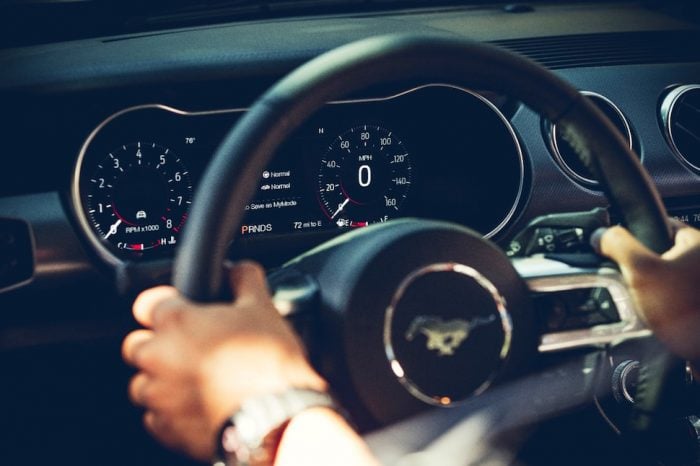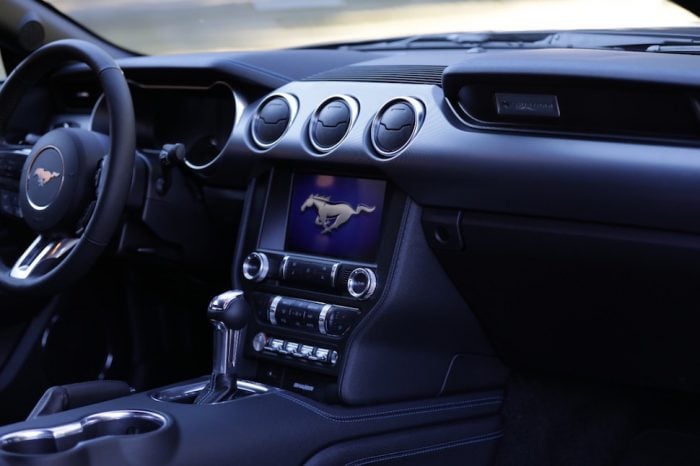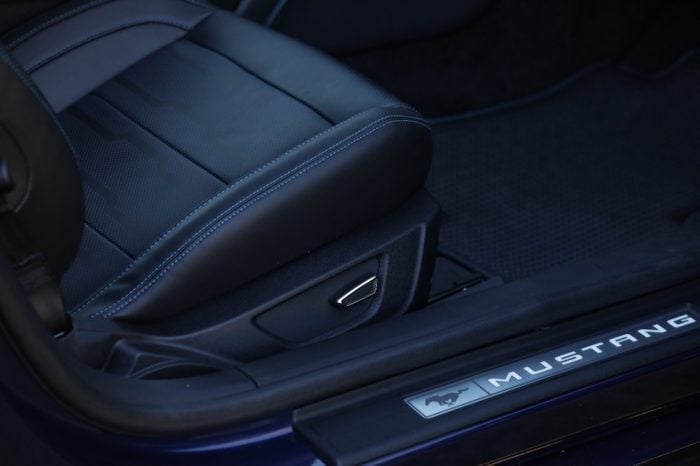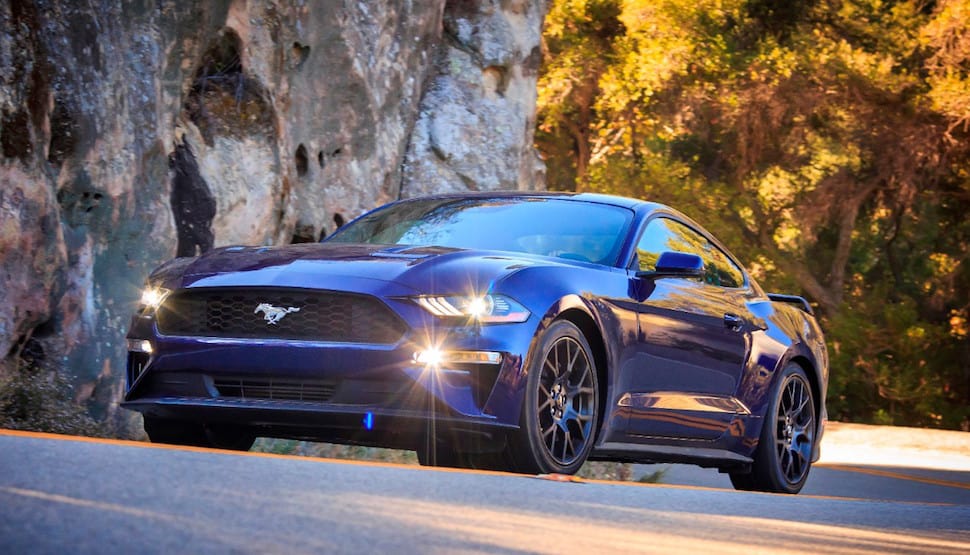Mention the Ford Mustang to a casual observer of the car industry. You can almost guarantee their first question will have something to do with that car’s decades-deep heritage as a muscle car best known for V8 power and straight-line performance.
Understandably, those casual car fans tend to be surprised (or is that disappointed?) when they learn the Mustang is now available with a four-cylinder engine and has added sports-car cornering abilities to its resume.
Those changes were part of a 2015 redesign that brought the Mustang into its sixth generation. The base engine is now a 2.3L turbocharged four-cylinder, and that newfound cornering ability is partly the result of this model’s first-ever independent rear suspension.
Mustang EcoBoost Vs. Mustang GT:
Without the GT trim’s V8, there’s no boomy exhaust sound. And some of what you hear in the Mustang Ecoboost’s cabin (as Ford refers to the four-cylinder version) is a synthesized version of the engine’s sound played through the stereo speakers. If you want the real deal, roll the windows down: the exhaust note sounds okay when you get to hear it firsthand.
Here’s a closer look at the 2018 Mustang GT we reviewed and drove in California last year.
2018 Mustang EcoBoost Power and Performance

The turbo four-cylinder generates 310 hp and 350 lb-ft of torque, a big deficit next to the GT V8’s 460 hp and 420 lb-ft. And yet, the four-cylinder is actually more powerful than the GT trim’s V8 was 10 years ago, and it’s certainly strong enough to deserve its place under the Mustang’s hood.
Ford says the Ecoboost engine’s torque peaks at 3,000 rpm, but there’s useful power available below that, too. It takes an aggressive right foot to unlock the car’s full potential — it will happily lay down rubber and do a decent power slide — but that’s okay with us, as it makes the Mustang a friendlier daily driver.
Our tester came with the six-speed manual transmission that’s part of the standard package. It’s a good fit for this car, with the pleasant mechanical feel the shifter and clutch deliver to the driver who’s willing to do their own shifting. For those not into it, there’s the option of a 10-speed automatic.
Mustang EcoBoost Performance Package Upgrade

The car we drove was also fitted with a performance package whose notable upgrades included stronger brakes, grippier tires, and a sharper suspension tuning that was still compliant enough to be comfortable on city streets.
This option lets the chassis keep up with the Ecoboost engine’s performance: charging down some of our favourite back roads, we ran out of guts before we came close to this car’s handling limits.
Fuel consumption figures:
Ford’s fuel consumption estimates for our test vehicle (including that performance package) are 11.8/8.4 L/100 km (city/highway); we saw a real-world average of 12.4 L/100 km in a mix of city and highway driving.
2018 Ford Mustang Interior

The Mustang may be designed to evoke an era when cars (especially sports cars) were straightforward machines, but modern times demand up-to-date technology. Along with a digital gauge cluster and drive modes that tailor a performance to the racetrack and drag strip environments, our test car was optioned with Ford’s Sync 3 infotainment system and an electronic suspension that adjusts ride settings based on the drive mode selected.
The digital gauges and Sync touchscreen (which houses audio, navigation, and redundant climate controls) were among the few aspects of the Mustang’s interior we’d call modern-looking. At the same time, the rest of the dashboard is strictly functional.

Like us, you might be glad backup cameras are now mandatory in Canada, as the view rearward is not great, and the small side mirrors made us appreciate our test car’s optional blind-spot monitor.
Otherwise, the only disappointment to us (as fans of cars that are both practical and quick) is the Mustang’s small back seat, which is unusable if those riding up front are anything resembling tall in stature.
Takeaway

Hardcore muscle-car fans may be unimpressed by this kinder, gentler performance expression. Still, we can get behind the Mustang’s satisfying manual transmission, the turbo four-cylinder’s decent torque, and this engine’s thriftier fuel economy. This isn’t your father’s sports car, and you know what? That’s a good thing.
2018 Ford Mustang EcoBoost Specs
- Engine: 2.3L turbocharged four-cylinder
- Power: 310 hp
- Torque: 350 lb-ft
- Transmission: Six-speed manual
- Brakes: Four-wheel disc
- Steering: Electric power-assist rack-and-pinion
- Suspension: MacPherson strut (front); Integral-link independent (rear)
- Fuel economy, ratings (l/100km, city/highway): 11.8/8.4
- Fuel economy, observed (l/100km): 12.4
2018 Mustang EcoBoost Price:
In the US, the EcoBoost Fastback starts at US$26,120 and C$29,599 in Canada. Our model here rings in at C$36,535 starting MSRP as tested.
Mustang Convertible:
If you’re partial to the droptop 4-cylinder Mustang, the EcoBoost Convertible starts at US$31,620 or C$34,599. Want to level up to a proper V8 Mustang? The top-end Shelby GT350R with the 5.2L Ti-VCT V8 engine rings in at US$67,135 or C$85,500.



